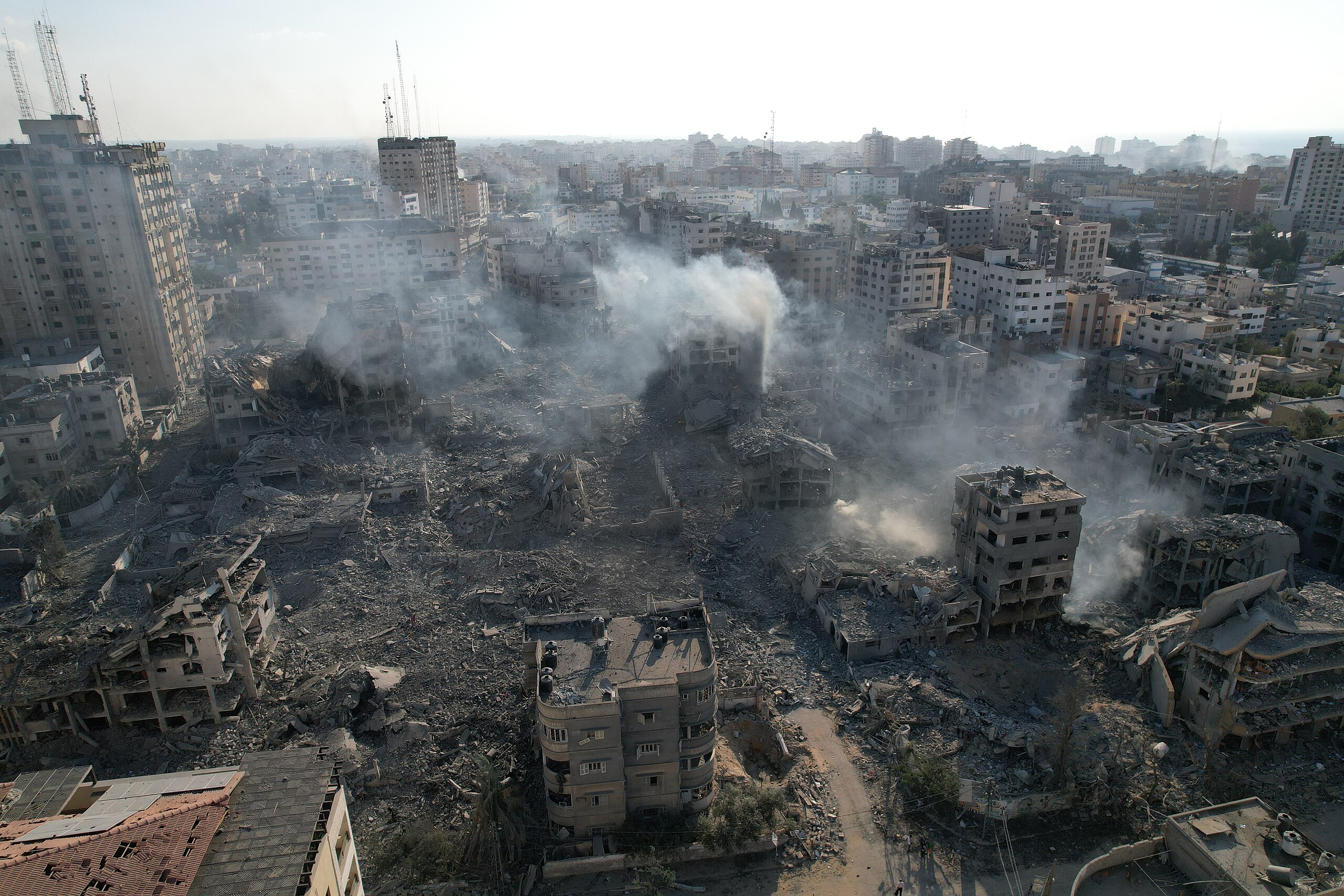On Friday morning, Nov. 17, 2023, Gaza Time, according to an article by Reuters, Hamas and Israel started a four-day ceasefire where both sides released civilians, and aid was allowed to enter Gaza for the first time since Oct. 7. Under this deal, 50 Israeli hostages detained on Oct. 7 by Hamas are expected to be released alongside 150 Palestinian women and children imprisoned under administrative detention. The United Nations defines administrative detention as being jailed without a trial.
According to an article by ABC7, Israeli Prime Minister Benjamin Netanyahu’s office released a list of a potential 300 prisoners who could be released but has only agreed to release half that number. Most of the prisoners listed for release are male children aged 16 through 18, with some as young as 14 in addition to 33 women. This list is only 1.8% of the over 8,300 Palestinian prisoners currently held in Israeli jails, approximately 3,000 of whom are held under administrative detention.
In coverage by Reuters, Hamas has agreed to release 20% of their 240 hostages captured on Oct. 7; these hostages are expected to be released in batches in exchange for the Palestinian prisoners throughout the four-day pause in violence. In addition to Israeli civilians, half of the hostages kept by Hamas are foreign and dual nationals from around forty different countries.
Wording of the deal from an AP News article states, “Israel and Hamas agreed to a four-day halt in hostilities,” meaning that this deal only applies to Gaza and Israel and provides no mention of the West Bank as part of the humanitarian pause.
According to an Al Jazeera article, “Israel has said that northern Gaza is out of bounds” and that displaced people will not be allowed to “enter the north of the war-torn enclave.” It was reported that “at least two Palestinians are reported to have been killed by the Israeli military, and 11 wounded, as they have attempted the trip to northern Gaza.”
A previous Reuters article mentioned that both sides have reiterated their commitment to the cause after the four-day humanitarian pause. Israel has stated that the conflict will continue until Hamas is eliminated and all the hostages are free, and Hamas has stated that its “finger remains on the trigger.”
Despite this, both sides have also made clear their commitment to the truce, as reported by a New York Times article. The article reports on Hamas’s top official, Ismail Haniyeh, who, in an interview with Al-Jazeera, stated, “The movement reaffirms its commitment to the successful implementation of the agreement, as long as the enemy also commits to its implementation.” According to a Reuters article, Israeli officials have also stated that for an extra ten hostages released by Hamas, the truce will be extended by one day.
A New York Times article reported that since the ceasefire deal brokered by Qatar, more aid has been allowed to enter Gaza, where approximately 2.2 million people have been displaced. According to the United Nations (UN) Special Coordinator for the Middle East Peace Process, Tor Wennesland, “today’s humanitarian pause went into effect with relative calm allowing truckloads of aid to go into Gaza.” By the first night, 140 trucks carrying humanitarian aid were allowed to enter through the Rafah border crossing, which had been closed, according to an ABC News article.
On Friday, in the first round, Hamas released 24 hostages in exchange for 39 Palestinian prisoners, as reported by an AP News article. After the United Nations (UN) warnings that Gaza residents are approaching starvation largely due to a lack of fuel and food, “129,000 liters of fuel and four trucks of gas” aid were allowed to cross into Gaza. In an ABC News piece, the World Health Organization has described Gaza’s hospital situation as “catastrophic.” With most hospitals no longer functioning, this exchange also allowed for the evacuation of 21 of the over 27,490 reportedly injured Palestinians to “larger scale medical operations,” from information pulled from various news sources.
A New York Times article reported that Hamas officials threatened to postpone hostage transfers on day two, claiming “Israel had reneged on parts of the agreement … Israel had not allowed enough aid to reach northern Gaza and had not released Palestinian prisoners according to agreed-upon terms.” Another New York Times article reported that before Oct. 7, Gaza, on average, would receive 500 trucks of aid per day; Israel has since decreased that number. Despite threats, Hamas handed over 13 Israeli hostages in exchange for 39 Palestinian prisoners. In a report by Reuters, Saturday night, in Jenin Refugee Camp, West Bank, Israeli forces killed seven Palestinians, including two minors, which is not a violation of the ceasefire since it only applies to Gaza.
Sunday, Nov. 26, Hamas freed 17 hostages in exchange for 39 Palestinians, as reported in an AP News article. All of the Palestinians were young men aged 17 and under, and three Thai nationals. The Israel hostages ranged from age four to 84, including 14 Israelis and four foreign nationals.
Disclaimer: This article will be updated on the online issue as the ceasefire progresses. If you wish to learn more about where the information came from, check the online issue to see all the linked sources.









